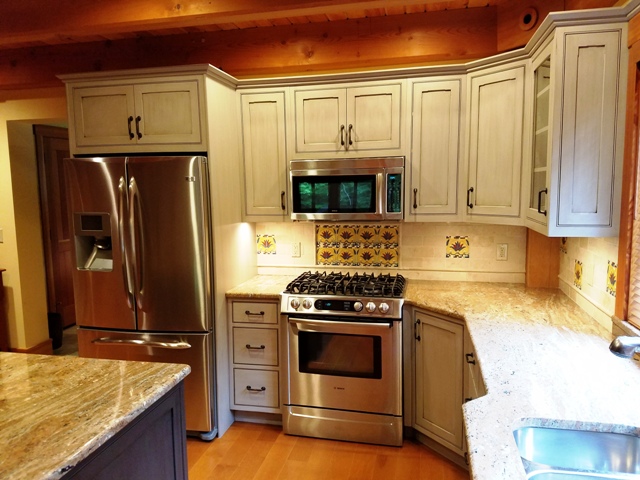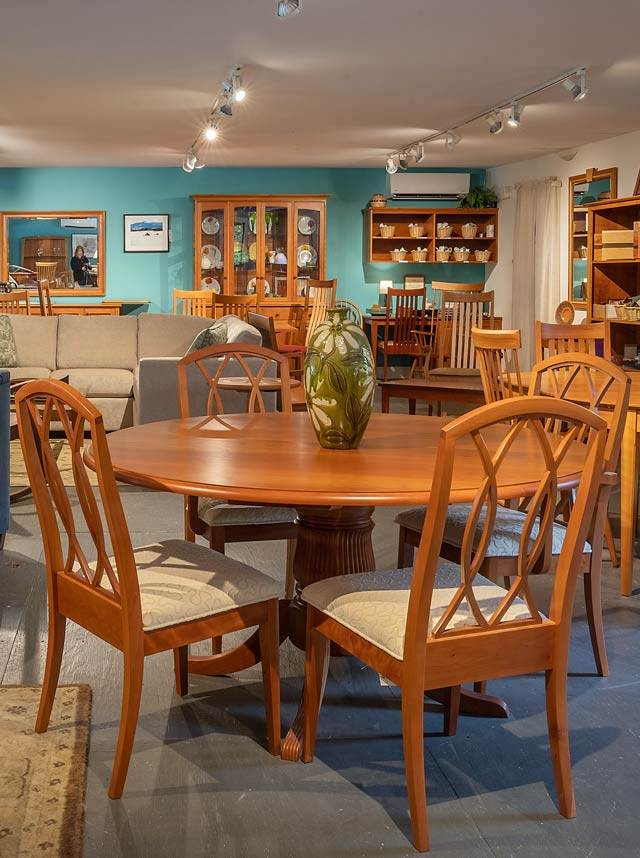Living Green
Vermont’s forests are far from endangered. Originally Vermont was primarily forested, the natural condition. In the 1800’s the landscape was over 80% cleared for charcoal, potash, lumber, and open land for agriculture. However, much of the terrain in Vermont is not conducive to modern agriculture so in the 1900’s the less productive land was left to “grow up.” As soon as you do not keep open land cut or pastured, underbrush will take over, and eventually, our common northern hardwoods (maple, beech, birch, ash, oak, etc.) will dominate. Today the state is once again 80% forested.
Do We Replant?
Some wood products companies claim to replant trees to make up for the trees they use. Any company in our part of the country is pandering to incorrect perceptions by saying this. Trees take root by themselves and often sprout too thick for their own long-term health. Over time trees are thinned, allowing the healthiest ones to grow. The type of forestry that happens around here is selective harvesting and culling. Tree stands are thinned, providing logs and opportunities for nearby trees to thrive.
Diversity
While removing any trees has an impact on the forest and a fully mature forest might be the goal of some but it isn't necessarily optimum in every respect. A more varied forest (young trees, older trees, gaps in the canopy) is more biodiverse. New growth in the understory attracts wildlife that would not be found otherwise. I have heard that there is more wildlife now in Vermont than in colonial times.

Our Promise
Clearlake Furniture purchases wood from ecologically responsible lumber producers locally and from people we know. Because of the vast array of furniture types that we create, all of the wood we purchase is used, re-used, and recycled to the bitter end in support of our beliefs in reducing our carbon footprint. Even the smallest of remains are used as fuel to fire our operations in the workshop.
Efficient Use
The best strategy in managing valuable resources is to make sure they aren't squandered. There is a hierarchy in the use of forest material. The better the wood, the less there is available since most tree growth does not lead to perfect boards. The best logs go to veneer mills and the next best are sawlogs to make lumber. Lumber is graded and the best can be used for furniture (dining room tables) and the middle grades can be used for small parts (toys) where we can cut around the defects. Lower grades are used for industrial purposes like pallets. Other forest material, like chipped branches, can be sold for biomass for heating. We cut our lumber for the highest and best use. Larger cuts are taken first and progressively smaller items are made from what is left.
Carbon Sequestration
The latest buzz about forests is carbon sequestration. Substantial portions of wood is simply carbon, which is kept out of the atmosphere as long as the wood isn't burned or decomposed. This leads to a misinformed sense that trees should not be cut. Mature forests are stagnant forests, they do not grow new material. However by selective harvests and making products, that carbon remains locked away and the forests regenerate and absorb even more carbon.
Better Ways?
Forest management practices constantly improve and we all welcome ideas that make logical and scientific sense. Armchair conservators often don't understand forests and trees. It is not harmful to cut a tree, they are a completely renewable resource. Downed trees and limbs are often that way because they are weak (rotten) and thus unsuitable for lumber. Any idea of cutting healthy branches from healthy trees as a way of avoiding cutting whole trees is unhealthy, unsafe and completely impractical.

Check out our work
Projects we're proud of
See our portfolio of full projects. We do Custom Kitchen Cabinetry, Commercial, and Limited Edition furniture pieces.



